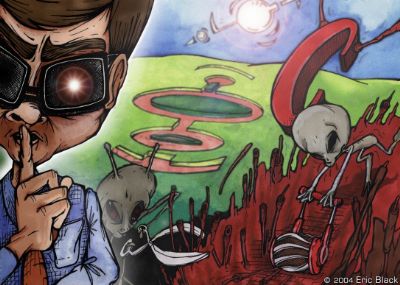Various researches were conducted in this phenomenon and a number of observations have also been made over the years that finally seem to indicate that there are particular characteristics that “genuine” (or non-mandmade) formations appear to exhibit.
Research has been conducted over a ten year period with samples and thorough laboratory testing carried out by the biophysicist Dr. Levengood, Nancy Talbott, and John Burks — the BLT Research Team, and a small army of volunteers worldwide. Their findings include from samples taken within the crop formations in contrast to the control samples taken from outside the circles.
Levengood studied biophysics at the University of Michigan in the late 1960s and holds several patents on his inventions to increase seed growth and vigor. He has studied biochemical and biophysical changes in crop formation seeds and plants for over a decade.
He has found out that the plants from more than 95% of the sampled events revealed either single or multiple anomalous and readily apparent structural alterations at the macroscopic level. In general, these consisted of significant enlargements of the cell walls, expulsion cavities in the nodes of the plant stalks, significantly extended node lengths, and changes to the soil composition (ie. vastly higher level of magnetite concentration).

Significant changes in seed germination and development were also found. Affected plants also have characteristics suggesting the involvement of transient high temperatures. Not one of these clearly anomalous plant alterations had been mentioned – much less explained – by the proponents of the croppies theory, nor can they be accounted for by the supposed methods employed to create crop formations through claims made by the circle makers.
Levengood thinks what is creating the crop circle is a complex energy system that he describes as a “spinning plasma vortex” of ions with microwave frequencies that rapidly heat water in plants, causing them to collapse to the ground with stems not cracked or broken. Further, the microwave frequencies can heat up water in the plant’s growth nodes which burst out, creating small holes that have often been found in extraordinary crop patterns. Those complex energies can also affect the seeds.
Levengood. W.C. 1 994. Anatomical anomalies in crop formation plants.– Physiol. Plant. 92: 356-363.
“The affected plants have components which suggest the involvement of rapid air movement, ionization, electric fields and transient high temperatures combined with an oxidizing atmosphere. One naturally occurring and organized force incorporating each of these features is an ion plasma vortex, one very high energy example being a lightning discharge.
Atmospheric-associated plasma formations may plausibly originate in regions where there are clear indications of energy exchange between the ionosphere (60-100 km) and electrical storms in the upper atmosphere (Franz et al. 1990). Currently under consideration are ion plasma vortices which form in unstable regions and act as heat and angular momentum transporters. In fluid dynamics, gases, including air, are considered as having liquid properties (Prandtl and Tietjens 1957).
In such a scheme the descent of a vortex through a liquid produces unstable secondary products which form complex, symmetrical patterns such as circles, rings, triangles, double lines and ovals with tubes or ‘paths’ extending from them (Levenoood 1958). In its descent to the crop surface the shaping of these features of vortex instability would be guided by variations in the Earth’s magnetic field (Rossi and Jastrow 1961). At the crop surface the heat, ionization, associated electric fields and angular momentum would be transferred to the living plants.
Taken as a whole, ionized air plasmas are electrically neutral, although internally, charge separation takes place and they can have high concentrations of positive ions and free electrons (Lehnert 1961), which in contact with plant tissue might produce transient heating and account for a number of the plant transformations.
